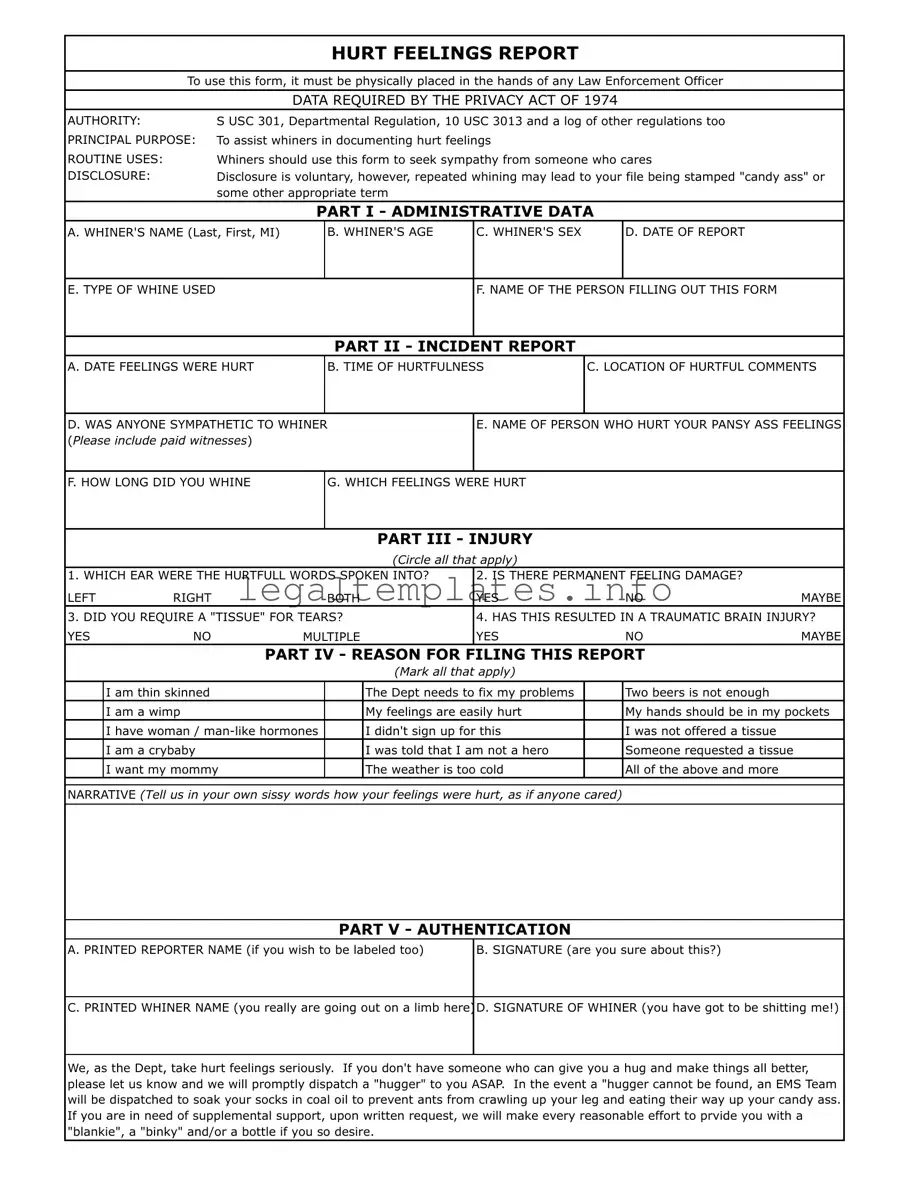The "Employee Complaint Form" shares similarities with the Hurt Feelings Report in its structured approach to documenting grievances in the workplace. Both forms serve as a means for individuals to formally express their concerns or issues. The Employee Complaint Form, however, is used in a more serious context, allowing employees to report problems that might affect their job satisfaction or work environment, ensuring these concerns are addressed professionally.
The "Incident Report Form" is another document that parallels the Hurt Feelings Report, albeit in a more formal and serious manner. This document is typically used in workplaces or schools to record details of an unexpected event such as an injury, safety breach, or other significant incidents. Both forms require detailed information about the event, including the date, time, location, and parties involved, underlining the importance of a thorough account of the incident.
Similar to the Hurt Feelings Report, the "Bullying Report Form" is used in educational settings to enable students to report incidents of bullying. It focuses on ensuring a safe and respectful environment for students by documenting instances where a student feels threatened, harassed, or demeaned. Like the Hurt Feelings Report, this form helps identify the parties involved and the specifics of the incident, though its use is aimed at serious interventions to prevent future occurrences of bullying.
The "Customer Feedback Form" shares the Hurt Feelings Report's aim of collecting individual opinions and experiences, although in the context of customer service. This form allows customers to voice their satisfaction or concerns regarding the service or product they received. Both documents function as tools for collecting feedback, but the Customer Feedback Form plays a critical role in business development by identifying areas for improvement and enhancing customer satisfaction.
The "Patient Grievance Form" found in healthcare settings also resembles the Hurt Feelings Report in its purpose to document and address complaints. Patients use this form to express any discontent with the care or service they received. While the Hurt Feelings Report captures feelings in a lighthearted manner, the Patient Grievance Form serves a critical function in healthcare quality assurance, ensuring patient concerns are investigated and addressed promptly.
"Peer Review Forms" in educational or professional contexts bear resemblance to the Hurt Feelings Report. These forms are used to evaluate the performance or contributions of peers in a group setting. Though the Peer Review Form is designed for constructive feedback and professional development, both documents center on the recipients' behaviour, performance, and its impact on others within a specific context.
Last but not least, the "Suggestion Box Form" shares its foundational purpose with the Hurt Feelings Report - to offer individuals a means to express their thoughts, concerns, or proposals for change. Typically placed in communal areas of workplaces or public institutions, these forms encourage individuals to contribute ideas that could benefit the collective environment. Unlike the satirical nature of the Hurt Feelings Report, Suggestion Box Forms are essential tools for fostering improvement and inclusivity within organizations.

